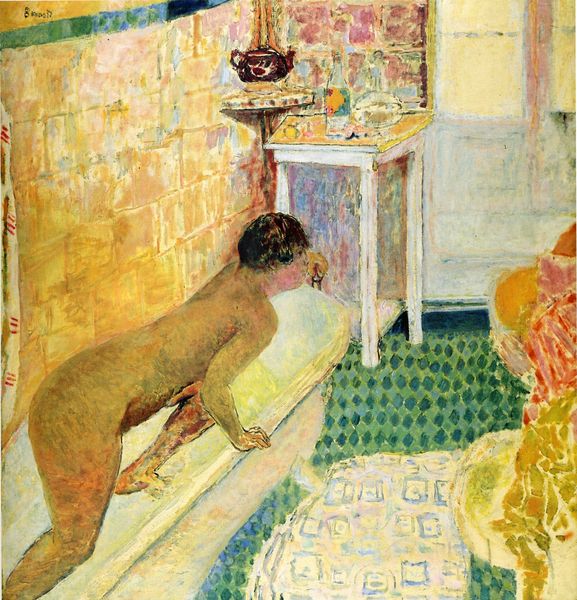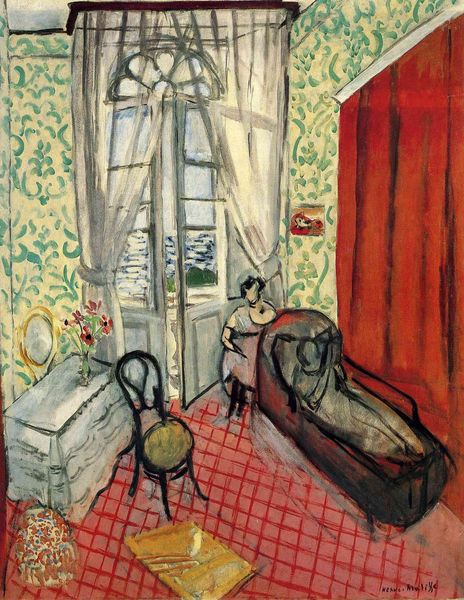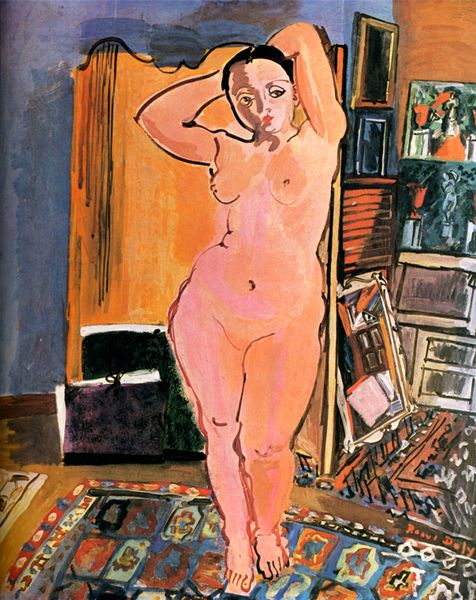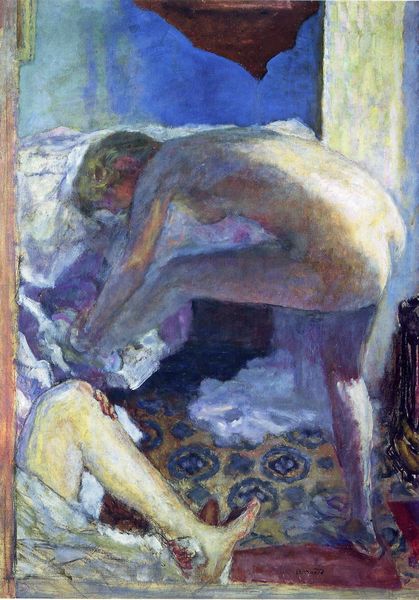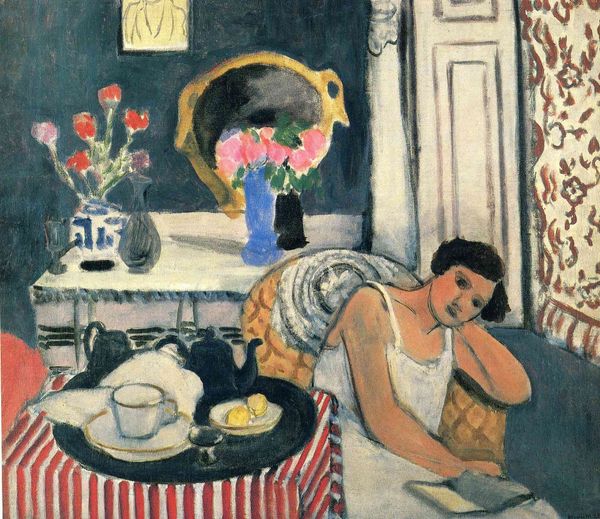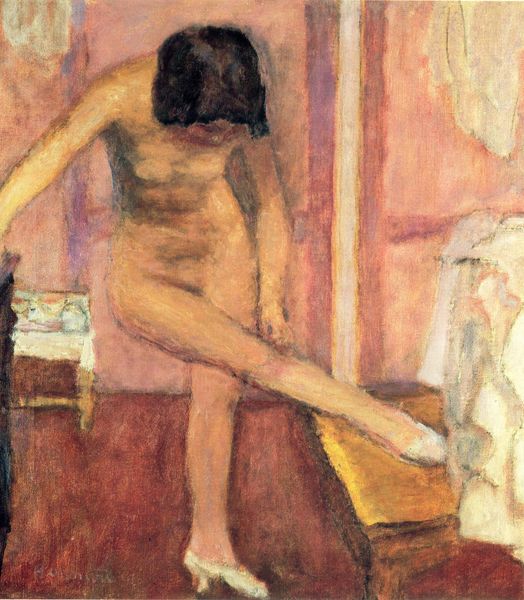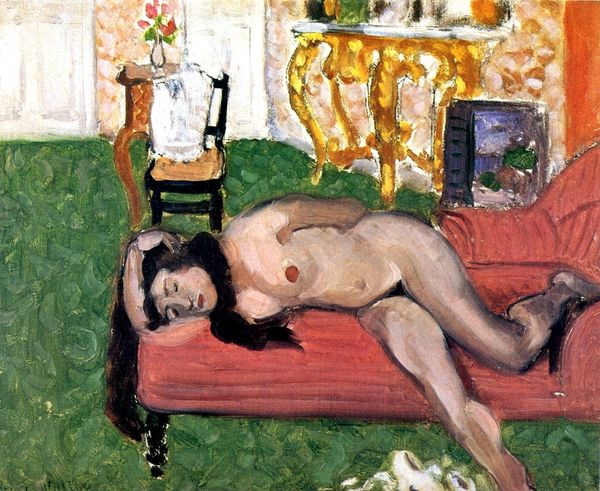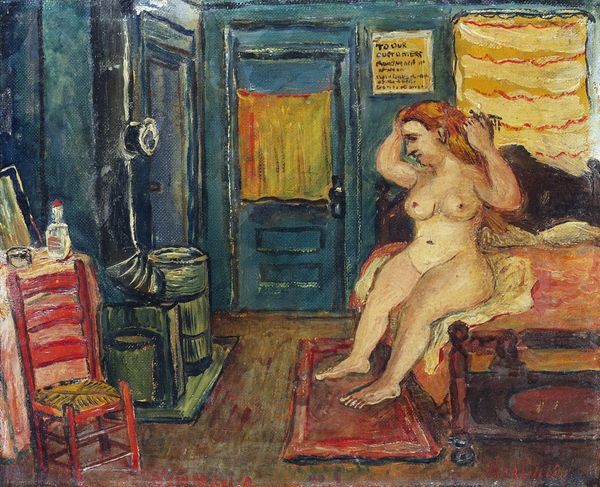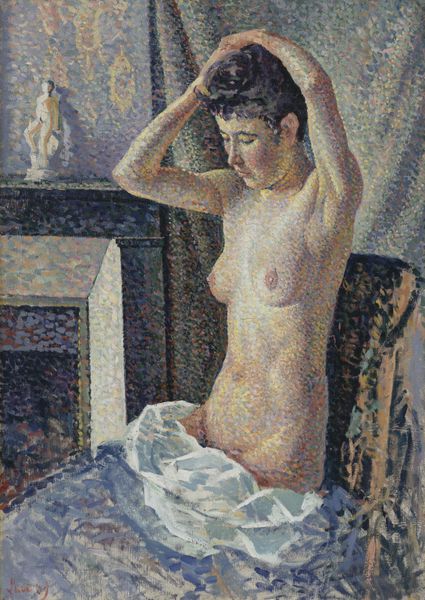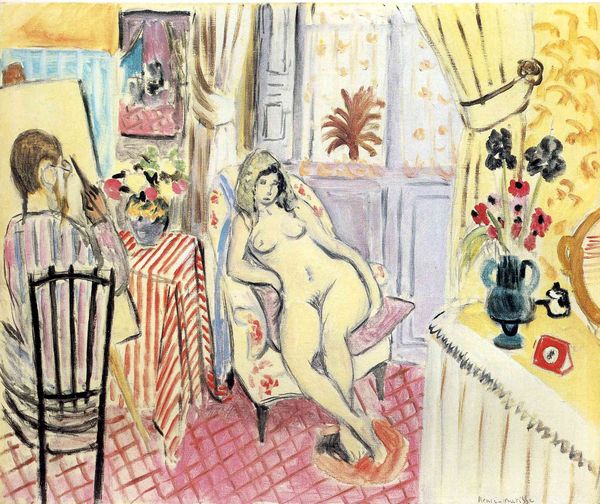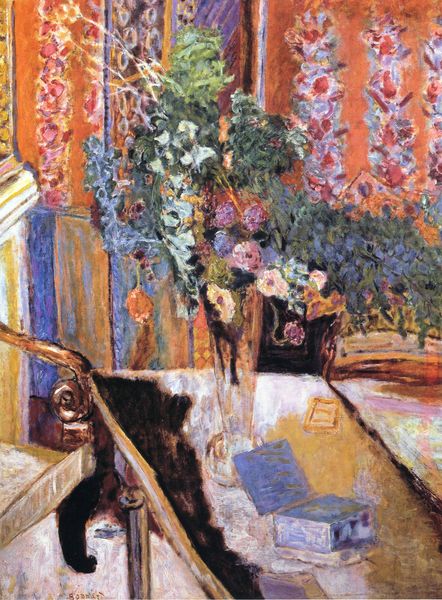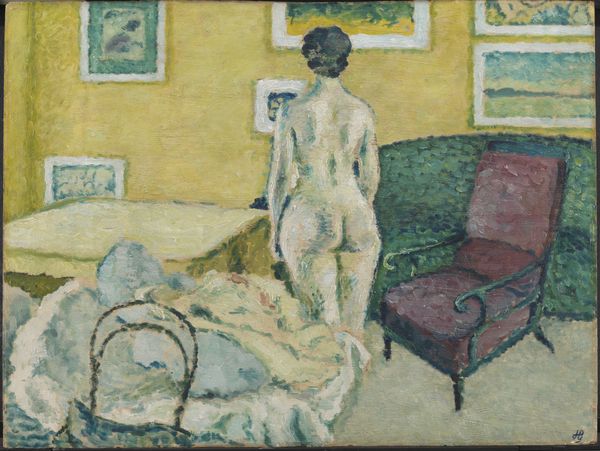
Model in Backlight 1908
0:00
0:00
pierrebonnard
Royal Museums of Fine Arts of Belgium, Brussels, Belgium
Dimensions: 125 x 109 cm
Copyright: Public domain
Editor: Here we have Pierre Bonnard's "Model in Backlight" from 1908, rendered in oil paint. The composition feels so intimate, a glimpse into a private moment. The woman is standing nude, silhouetted against a window. It feels like he has a deep personal relationship with his subject. What catches your eye, what do you see in this piece? Curator: It's interesting you use the word 'intimate' because that's precisely what Bonnard, along with the other Nabis, were striving for. It’s not just a nude, is it? It's about the everyday, the personal. I find my gaze darting all over the place, much like the broken colour, a feast of textures and patterns, the floral wallpaper, the curtains, all clamoring for attention. And the way she is cropped, slightly awkward… reminds me a little of Degas. He's playing with visual space here, flattening perspective. Does that resonate with you? Editor: Absolutely! It feels very contemporary, even now. And there's that mirror, reflecting...something? It looks almost like a sculpture in the mirror's background and then another painting or frame just behind her and above the lounge. Curator: You've spotted it! Bonnard loved mirrors, not just for reflection, but to fracture the composition. Look how it echoes the pose of the figure. You know, Bonnard was known for taking his time to finish his works. He would come back to them and repaint parts, and it may have taken him years! I can only imagine he’s asking us to reflect on more than what meets the eye, but also his evolution as an artist and that intimacy. Editor: That makes so much sense given that broken style; that explains the mirror in the background to frame a sculpture, another piece hanging behind the subject. A reflection of him, perhaps? Curator: Indeed! We each see only a fractured angle of each other’s existence, much like his artistic genius, maybe we get but a small glimpse in passing to understand who they were in life, or what they felt when they captured these people. Editor: Thank you! I think I understand Impressionism far more now, its emotional depth rather than only its technical skill.
Comments
No comments
Be the first to comment and join the conversation on the ultimate creative platform.
